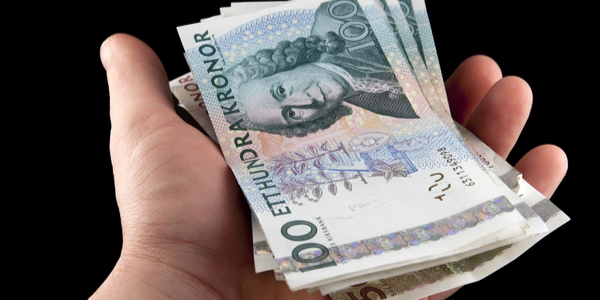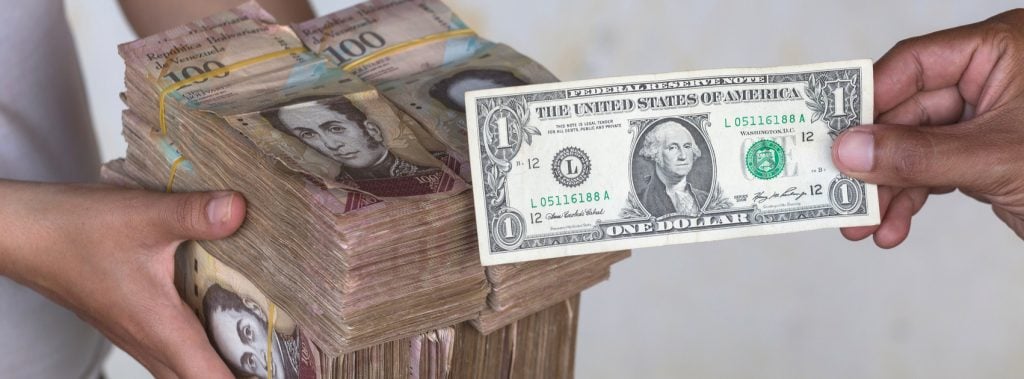Venezuela is being crushed by staggering hyperinflation as a
sharply divisive political crisis has the economy in ruins. Some are
seeking refuge in alternatives to the national currency, like foreign
fiat and crypto. The situation also calls into question the long-term
trajectories of other, less volatile economies. National banks globally
have been consistently struggling to balance fiat value against interest
rate policy now for decades.
Soaring Inflation in Venezuela
Hyperinflation in Venezuela has been projected by the IMF to reach 10,000,000% some time this year. The Venezuelan AN (Finance Committee of the National Assembly) puts the final inflation rate for 2018 at 1,698,488.2%. According to recent statistics,
that number has since fallen below 1,000,000%, but the reasons for this
are unclear, and the numbers are being called into question.
While data from different government agencies and economic research
groups vary, what is agreed upon is that the Venezuelan bolivar (VEF)
has been rendered almost worthless. With the divided Venezuelan government
in shambles, an economic crisis has emerged where consistent and
reliable data is not easy to come by. And more importantly, where basic
survival has become a challenge for large numbers of individuals living
in the country.
Venezuelan Government Reports Questionable Trends
Recent inflation data,
released for the first time in three years by the Venezuelan Central
Bank (BCV) itself, indicates positive trends of month-to-month decreased
inflation and CPI.

While the BCV report presents a somewhat positive outlook, others disagree. According to venezuelanalysis.com, the situation is not bright or favorable at all:
This is something we’ve been stressing: the essence of
the anti-inflationary policies consists in shrinking people’s purchasing
power as much as possible, so that they won’t buy dollars in the black
market, – those who could afford it – thus stabilizing the exchange
rate. But more than that, the goal is that people, in general, buy less
of everything so that there’s less pressure on prices to go up.
The reported statistics thus might be simply a reflection of a
drastically shrivelled GDP, and cherry-picking research methods. At
street level, the Venezuelan bolivar is virtually lifeless, and the
government has already had to issue bills of strikingly large denominations to keep up.
People are frequently paying for goods with black market USD, purchased illegally due to high demand and strong restrictions placed on official market channels. To get an idea of just how staggering the numbers are, a video by Youtube channel Livelydata (based on IMF statistics) provides an eye-opening comparative analysis.

Inflation in Other Countries
Venezuela currently leads the world in national inflation, but this
doesn’t mean that other countries remain unaffected by global trends.
While the top 10 countries hit hardest by hyperinflation include
Venezuela, Zimbabwe, Sudan, Argentina, Iran, South Sudan, Liberia,
Yemen, Angola and Turkey, the worldwide trend is one of declining
purchasing power as well.
In Sweden—ranking only 102nd globally for inflation—the value of the
krona (SEK) dropped to a 17-year low in April, arguably due to the Riksbank (Sweden’s central bank) delaying interest rate hikes. While some isolated indicators
and speculation point to upcoming signs of strength based on Riksbank
interest rate policy and the manufacturing sector, the macroeconomic
trends remain questionable.

In the U.S., ranking just six spots above Sweden on the IMF chart,
the dollar does not seem to be faring much better. According to
London-based research group Emerging Europe, the June 19 tumble
of the USD below the 97 handle was a result of the Federal Reserve’s
dovish policy to maintain current interest rates. The argument being
that many global and emergent markets were hoping for a shot in the arm
via slashed prices. It noted:
“The dollar fell below the 97 handle on June 19, with the index falling as low as 96.57 during the day’s trading. This decline was a clear response
to the Fed’s reiteration of their willingness to, at the very least,
maintain interest rates at their current level. In all likelihood, those
interest rates will be slashed to stimulate the global economy.”

Global Devaluation of Currencies
Compared to other countries, Venezuela’s inflation crisis may seem
incomparably dire. The exponential rate of economic downturn dwarfs
analogous statistics of other economies. Analyzing trends in currency
devaluation in Sweden and the U.S., however, results in consistent
devaluation data as well, just at a much, much slower rate.
From the perspective of sustained, macroeconomic movement, both the
USD (the world’s largest reserve currency) and SEK are in a steady,
decades-long decline. $1 in 1958 would be the equivalent of $8.86 in 2019. 100 SEK from 1958 would equal 1,284.14 SEK today.
According to research by Deutsche Bank,
the inflationary decline of value globally (via a median global rate)
stretches back for centuries. It has compounded in the 20th century by a
large-scale departure from commodities and metals-based systems, in
favor of increasingly credit and debt-based models. Jim Reid (of the
same group) writes:
As the twentieth century progressed, pressure against
precious metal currency systems rose, and many countries periodically
suspended their memberships and loosened policy. Inflation ensued.

Venezuelans Turn to Bitcoin, But There Are Real Challenges
Attempting to weather the crash, some Venezuelans are using
cryptocurrencies like bitcoin. Venezuelan economist Carlos Hernández claims that although conversion can be difficult due to state restrictions:
…you could say that cryptocurrencies have saved our family. I now cover our household’s expenses on my own.
Others don’t see crypto helping in a significant way.
“There are no official statistics of how many crypto wallets there
are in Venezuela. There’s no way to know how many each person owns. What
… is very clear is that beyond a couple of businesses that accept this
form of payment and a few trusted exchange platforms online, there are
no services for crypto users available in the country.” This is the view of Diana Aguilar, who only recently left the country in the midst of its collapse.

Hernández had been using the popular peer-to-peer trading website localbitcoins.com to facilitate domestic bank transfers. Statistics from the site detail a marked increase in exchange volume for the VEF/BTC
pair beginning around 2018. Though opinions on what the best solution
is differ, the bolivar has now become a real economic liability for
Venezuelans.
source link











